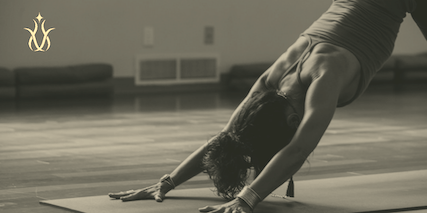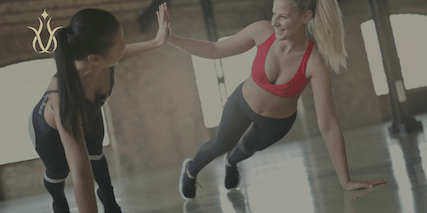Embark on your yoga journey with our comprehensive guide tailored for beginners. This article addresses all the common questions newcomers have about starting yoga. Learn about the different styles of yoga, from Vinyasa to Hatha, and find out which one might suit your goals and lifestyle. Discover the essential poses for beginners, proper breathing techniques, and tips for setting up your practice space at home.
Whether you’re looking to improve flexibility, reduce stress, or enhance overall well-being, our guide ensures you have all the tools and knowledge to begin your yoga practice with confidence and clarity.
What is Yoga?
Yoga is a holistic practice that originated in ancient India and has been practised for thousands of years. It is a mind-body discipline that combines physical postures (asanas), breathing exercises (pranayama), meditation, and ethical principles to promote overall well-being.
At its core, Yoga aims to create harmony between the body, mind, and spirit. It goes beyond just physical exercise and focuses on cultivating a state of balance, inner peace, and self-awareness. Yoga encourages individuals to connect with their bodies, breath, and present moment, fostering a sense of mindfulness and deepening the mind-body connection.
In Yoga, the physical postures (asanas) are used to promote strength, flexibility, balance, and body awareness. These postures are often combined with controlled breathing techniques (pranayama) to enhance the body’s energy flow and bring a sense of calmness to the mind.
Additionally, Yoga incorporates meditation and relaxation practices to quiet the mind, reduce stress, and promote mental clarity and emotional well-being. It encompasses various styles and approaches, such as Hatha, Vinyasa, Ashtanga, Kundalini, and Yin yoga, each with its own focus and intensity.
While Yoga is often associated with physical benefits, such as increased flexibility and strength, its true essence lies in the integration of physical, mental, and spiritual aspects. It is a personal journey that allows individuals to explore and develop their inner self, leading to a more balanced and harmonious life.
Yoga is suitable for people of all ages and fitness levels. It can be adapted to individual needs and abilities, making it accessible to everyone. Whether practised in a group setting or individually, Yoga offers a pathway to self-discovery, self-care, and overall well-being.
What are the Benefits of Yoga?
Yoga offers numerous benefits for both the body and the mind. Here are some of the key benefits of practising Yoga:
Improved flexibility and strength:
Yoga poses, also known as asanas, help improve flexibility and increase muscle strength. Regular practice can enhance overall body flexibility, leading to better posture and reduced risk of injuries.
Stress reduction:
Yoga incorporates breathing exercises, meditation, and mindfulness, which can help calm the mind and reduce stress. It promotes relaxation, lowers cortisol levels (the stress hormone), and promotes a sense of well-being.
Increased body awareness:
Yoga encourages mindful movement and deepens the mind-body connection. By paying attention to the body’s sensations, alignment, and breath, practitioners develop a heightened sense of body awareness, leading to better posture and movement patterns.
Enhanced mental focus and concentration:
The combination of physical movement, breath control, and meditation in Yoga helps improve concentration and mental clarity. Regular practice can enhance cognitive function and promote a calm, focused mind.
Stress relief and relaxation:
Yoga activates the parasympathetic nervous system, triggering the relaxation response. It helps release tension and promotes a state of deep relaxation, which can alleviate symptoms of anxiety and promote better sleep.
Improved balance and stability:
Yoga poses often involve balancing on one leg or maintaining stability in challenging positions. Regular practice can improve balance, coordination, and overall stability, reducing the risk of falls and enhancing physical performance.
Increased mindfulness and self-awareness:
Yoga cultivates mindfulness and self-awareness through the practice of staying present in the moment. This can lead to greater self-acceptance, self-discovery, and a more positive outlook on life.
It’s important to note that the benefits of Yoga can vary from person to person. Consistency and regular practice are key to experiencing these benefits. It’s advisable to consult with a qualified yoga instructor or healthcare professional before starting any new exercise or yoga routine, especially if you have any underlying health conditions.
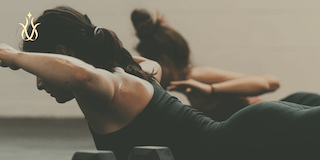
Is Yoga an Exercise?
Yes, Yoga can be considered a form of exercise. While it may not have the same cardiovascular intensity as activities like running or high-intensity interval training, Yoga offers numerous physical benefits and can contribute to overall fitness.
During a yoga practice, you engage in a series of physical postures (asanas) that involve stretching, strengthening, and balancing the body. These postures work on different muscle groups, improving flexibility, stability, and muscle tone. Certain yoga styles, such as Vinyasa or Power yoga, can also provide a more vigorous workout that increases heart rate and builds cardiovascular endurance.
In addition to the physical postures, Yoga incorporates controlled breathing techniques (pranayama) that enhance the flow of oxygen in the body, promote relaxation, and support overall respiratory health. The combination of movement, breath control, and mindfulness in Yoga helps to improve body awareness, coordination, and concentration.
Regular practice of Yoga can contribute to improvements in muscular strength, flexibility, balance, and posture. It can also help manage weight, reduce stress, improve sleep quality, and enhance overall mental well-being.
Is Yoga Good For You?
Yes, Yoga is generally considered good for you and offers a wide range of physical, mental, and emotional benefits. Here are some reasons why Yoga is beneficial:
Physical fitness:
Yoga helps improve flexibility, strength, and balance. The various poses and movements in yoga work on different muscle groups, promoting overall physical fitness and enhancing body awareness.
Stress reduction:
Yoga incorporates mindfulness and deep breathing techniques, which can help reduce stress, calm the nervous system, and promote relaxation. It has been shown to decrease levels of the stress hormone cortisol and increase feelings of well-being.
Improved mental well-being:
Regular yoga practice can enhance mental clarity, focus, and concentration. It can also help reduce symptoms of anxiety, depression, and insomnia. Yoga promotes a sense of calmness and inner peace.
Increased body awareness:
Through the practice of Yoga, you become more attuned to your body, its sensations, and its limitations. This increased body awareness can help prevent injuries, improve posture, and promote better movement patterns.
Flexibility and joint health:
Yoga poses gently stretch and lengthen muscles, tendons, and ligaments, improving flexibility and range of motion. This can help alleviate joint stiffness and discomfort, especially in areas prone to tightness, such as the hips, shoulders, and spine.
Breath control and relaxation:
Yoga incorporates specific breathing techniques (pranayama) that focus on deep, slow breathing. These techniques can help calm the mind, reduce anxiety, and induce a state of relaxation and tranquillity.
Overall well-being:
Yoga is a holistic practice encompassing physical, mental, and emotional well-being. It promotes self-care, self-compassion, and self-awareness, fostering a sense of balance and harmony in life.
As with any physical activity, practising yoga safely and listening to your body’s limitations is important. If you have any underlying health conditions or concerns, it’s advisable to consult with a healthcare professional before starting a new exercise routine.
It’s important to note that while Yoga can be a beneficial exercise, it is also a holistic practice that encompasses more than just physical fitness. Yoga aims to create harmony between the body, mind, and spirit, promoting overall well-being and a sense of inner balance.
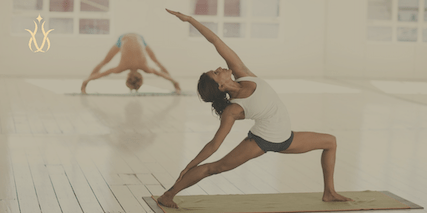
What does Yoga do for your Body?
Yoga offers numerous benefits for the body. Here are some ways in which Yoga positively impacts the body:
Flexibility:
Yoga poses, also known as asanas, involve stretching and elongating muscles and connective tissues. Regular practice can enhance flexibility and improve the range of motion in joints.
Strength:
Yoga poses often require holding body weight in different positions, which helps build strength in various muscle groups. Core strength, in particular, is emphasised in many yoga poses, leading to improved stability and posture.
Balance and Coordination:
Yoga poses often involve balancing on one leg or maintaining stability in challenging positions. Practising Yoga can enhance balance, coordination, and proprioception (awareness of body position and movement in space).
Posture:
Yoga focuses on proper alignment and body awareness. Regular practice can help correct poor posture habits and promote a more aligned and upright posture, which can alleviate pain and tension in the body.
Joint Health:
Yoga poses involve gentle movements that help lubricate the joints and improve their flexibility and range of motion. This can be particularly beneficial for individuals with joint stiffness or conditions such as arthritis.
Circulation:
The combination of movement, deep breathing, and relaxation techniques in Yoga can improve blood circulation throughout the body. This enhanced circulation delivers oxygen and nutrients to the tissues while removing waste products.
Stress Reduction:
Yoga incorporates relaxation techniques, deep breathing exercises, and mindfulness practices, which can activate the body’s relaxation response and reduce the effects of stress on the body. This can lead to a decrease in muscle tension, blood pressure, and heart rate.
Improved Respiratory Function:
Yoga emphasises conscious breathing techniques, such as deep belly breathing and alternate nostril breathing. These practices can improve lung capacity, enhance respiratory function, and promote a sense of calmness and relaxation.
Digestive Health:
Certain yoga poses, such as twists and forward folds, can stimulate digestion and improve gastrointestinal function. The combination of movement, breath awareness, and relaxation can also help alleviate symptoms of digestive disorders and promote a healthy digestive system.
Body Awareness and Mind-Body Connection:
Yoga encourages mindful movement and fosters a deeper connection between the body, mind, and breath. This heightened awareness can lead to better self-care, improved body image, and a greater sense of overall well-being.
It’s important to note that individual experiences with Yoga may vary, and it’s always advisable to practice under the guidance of a qualified instructor to ensure proper alignment and technique.
Is Yoga a Good Workout?
Yes, Yoga can be an excellent workout, depending on the style and intensity of the practice. While some yoga classes focus more on relaxation and gentle stretching, there are dynamic and physically demanding forms of Yoga that provide a challenging workout.
Certain styles of Yoga, such as Vinyasa, Power Yoga, or Ashtanga, involve flowing sequences of poses linked with breath, which can elevate heart rate, improve cardiovascular fitness, and build strength. These classes often incorporate dynamic movements, such as lunges, planks, and balancing poses, which engage multiple muscle groups and increase muscular endurance.
Additionally, yoga poses require stability, balance, and flexibility, which engage the core muscles, improve balance and coordination, and enhance overall body strength. Holding poses and transitioning between them can also increase muscular endurance and stamina.
The intensity of a yoga workout can be adjusted to suit individual fitness levels and goals. Whether you prefer a gentle practice for relaxation or a vigorous flow for a more challenging workout, Yoga offers a wide range of options to cater to different needs.
It’s worth noting that Yoga is not solely focused on physical fitness but also emphasises mental and emotional well-being. It incorporates mindfulness, breath awareness, and relaxation techniques, which can reduce stress, promote relaxation, and enhance overall holistic health.
Ultimately, whether Yoga is a good workout for you depends on your personal preferences, goals, and the style of Yoga you choose. It’s always recommended to consult with a qualified yoga instructor to find the right approach that aligns with your fitness level and objectives.
What is a Yoga Asana?
In the context of yoga, an “asana” refers to a specific body posture. The term originates from the Sanskrit word “āsana,” which literally translates to “sitting down.” However, in modern yoga practice, asanas can denote a wide range of positions, including standing, seated, inverted, twisting, balancing, and reclining postures.
The Yoga Sutras of Patanjali, one of the fundamental texts of yoga philosophy, refers to asana as the third limb in the Eight Limbs of Yoga. Initially, asanas were used to prepare the body for meditation by making it strong, flexible, and capable of remaining still for extended periods.
Each asana has its own set of benefits and can target different areas of the body, contributing to overall physical health, mental clarity, emotional balance, and spiritual growth. Examples of asanas include Tadasana (Mountain Pose), Savasana (Corpse Pose), Adho Mukha Svanasana (Downward-Facing Dog), and many others.
In practising asanas, the emphasis is not only on the physical posture but also on the breath and the mindful awareness of one’s body and movement. This holistic approach is what distinguishes yoga from many other physical activities.
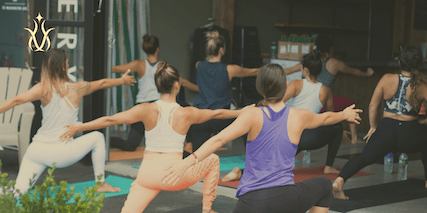
How to Yoga for Beginners?
Starting a yoga practice can seem daunting, but by following these steps, you can create a solid foundation to build upon:
- Start with Basic Poses: It’s essential to start with beginner-friendly poses, such as Mountain Pose (Tadasana), Downward-Facing Dog (Adho Mukha Svanasana), Child’s Pose (Balasana), or Tree Pose (Vrikshasana). These poses help to build strength, flexibility, and balance.
- Follow a Beginner’s Class or Course: There are many yoga classes and courses specifically designed for beginners. You could join a local yoga studio, but if you’re more comfortable at home, there are plenty of online resources. Websites like Yoga International and Gaia, or apps like Down Dog or Glo offer beginner-specific content.
- Use Props: Props like yoga blocks, straps, and bolsters can provide support and help you safely reach and hold poses. For example, if you can’t reach the ground in a forward bend, you can use a block.
- Breath is Key: In yoga, synchronising your movements with your breath is crucial. It helps you to stay focused, move with ease and cultivate a sense of inner calm. Generally, you’ll inhale as you stretch or expand and exhale as you fold or contract.
- Don’t Push Too Hard: Yoga isn’t about straining to achieve the ‘perfect’ pose. It’s about respecting your body’s limits and slowly progressing over time. If something hurts, ease off.
- Consistency is More Important than Duration: It’s better to practice a little bit every day rather than doing a long session once a week. Even 10-15 minutes daily can have a significant impact.
- End with Relaxation: Traditionally, every yoga session ends with Savasana (Corpse Pose), a pose of total relaxation. This allows your body and mind to integrate the practice.
- Consider a Yoga Style that Suits You: There are many types of yoga, such as Hatha, Vinyasa, Yin, Ashtanga, etc. Some are more strenuous, while others are more relaxing. Try out different styles to see which one you prefer.
What are the Best Yoga Apps?
Here are some of the best yoga apps that users have highly praised:
Down Dog: This app offers a large variety of yoga practices that can be customised based on level, focus, and duration. It’s also praised for its clear instructions and soothing music.
Glo: Glo provides access to thousands of classes of different styles, lengths, and intensities. The app also includes features for tracking your progress and a library of content related to meditation and sleep.
Alo Moves: Alo Moves offers over 2000 videos on Yoga and fitness. This app has a community feature that allows you to connect with other yogis worldwide.
Gaia: Gaia offers yoga classes and hundreds of documentaries and films about conscious living. The yoga classes cater to all levels and include a variety of styles.
Yoga Studio: This app offers HD video classes, and you can choose your level (beginner, intermediate or advanced), duration (15, 30 or 60 mins) and focus (strength, flexibility, relaxation, balance or combination) to create your own yoga workout.
Daily Yoga: This app is suitable for all levels, offering more than 500 asanas, 200 guided classes, 50 workout plans, and even pilates, meditation and the ability to create personal workout plans.
Asana Rebel: Asana Rebel combines traditional Yoga with exercises designed to build strength and burn calories. It offers more than just yoga classes, with tips on healthy eating and lifestyle advice.
Pocket Yoga: Pocket Yoga offers detailed voice and visual instructions to guide you through each pose and every breath.
Remember that the “best” yoga app depends on your personal needs and preferences, such as your experience level, desired style of Yoga, other fitness interests, and budget for app subscriptions. Some of these apps offer free content, while others require a paid subscription.
What are the Best Online Yoga Courses?
The following are some of the best online yoga courses:
Yoga International: This platform offers a diverse range of online yoga classes, workshops, and training from world-renowned instructors. Whether you are a beginner or an advanced yogi, this platform has something for you.
Glo: Formerly known as YogaGlo, this site has a variety of courses from some of the world’s top yoga teachers. With thousands of classes of varying lengths and levels, this is a great platform for a deep dive into Yoga.
Gaia: Gaia’s online platform offers an expansive collection of yoga classes that cover various styles, intensities, and durations. They also provide content about mindfulness, spirituality, and healthy living.
Udemy: Udemy offers a wide variety of online yoga courses, from Yoga for beginners to mastering advanced yoga techniques. It is a great platform if you prefer more structured, course-like content.
The Yoga Collective: The Yoga Collective has a vast library of classes that cater to different styles, levels, and durations. You can find courses specific to posture, flexibility, relaxation, and strength, among others.
Daily Burn Yoga: Daily Burn offers a variety of fitness courses, including Yoga. They provide yoga fundamentals, as well as Yoga geared towards strength, relaxation, or flexibility.
Alo Moves: Alo Moves provides classes taught by world-class instructors. They offer a variety of styles, including Vinyasa, Ashtanga, Hatha, Restorative Yoga, and more. They also offer fitness and meditation classes.
Do Yoga With Me: This platform offers a wide range of free and premium classes. They also offer yoga challenges and programs that last from 2 weeks to 3 months.
Before choosing an online yoga course, it’s important to consider your level of experience, your specific goals, and any specific styles of Yoga you’re interested in.
Resources:
Khoshnaw DM (2021). Yoga as a complementary therapy for metabolic syndrome: A narrative review. Available at: https://www.sciencedirect.com/science/article/abs/pii/S2095496420301023?via%3Dihub
de Manincor M et al (2016). INDIVIDUALIZED YOGA FOR REDUCING DEPRESSION AND ANXIETY, AND IMPROVING WELL-BEING: A RANDOMIZED CONTROLLED TRIAL. Available at: https://pubmed.ncbi.nlm.nih.gov/27030303/
The New York Times. Yoga for Everyone. Available at: https://www.nytimes.com/guides/well
John Hopkins Medicine. 9 Benefits of Yoga. Available at: https://www.hopkinsmedicine.org/health/wellness-and-prevention
Disclaimer: This article is for informational purposes only and should not replace professional medical advice. If you have specific concerns or medical conditions, it is recommended that you consult with a healthcare professional for personalised guidance and support.
Related Articles:
5 Reasons Why a Yoga Retreat Should Be Your Next Vacation
The Best Yoga Retreats in the World for a Life-Changing Experience
The Best Yoga Retreats in Bali
Best Yoga Retreats in Costa Rica
